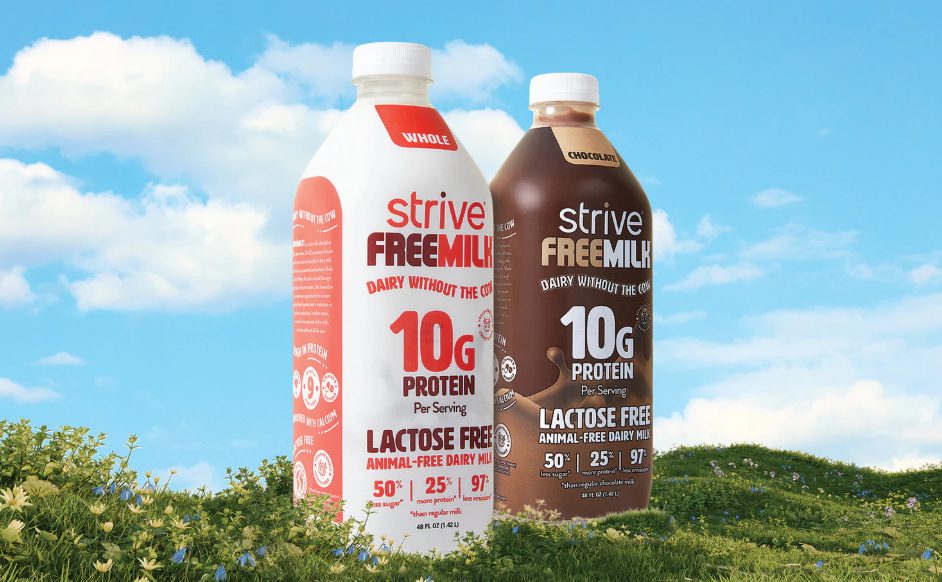When it comes to perceived health benefits, plant-based alternatives are at a pivotal juncture. On a recent Food Institute Podcast, Kerry Nutrition Scientist Nathan Pratt, PhD, RD, unpacked the challenges — and responsibilities — food manufacturers face to improve the nutritional value of plant-based products.
With that, the global plant-based alternatives market could swell to $166 billion in the next decade, according to a recent forecast by Bloomberg Intelligence. This rapid growth is fueled by broader consumer motivations such as planetary health and animal welfare, along with day-to-day considerations like taste and nutrition.
Among these drivers, Pratt believes that nutrition should be a strong bedrock.
According to Kerry’s 2022 global report Stepping Up Taste in Plant-Based, 63% of U.S. consumers started eating plant-based products because they are considered healthier, and 40% entered the category as plant-based is better for the planet.
“The industry as a whole is extremely focused on protein right now, that’s the way companies will compete with each other on a nutrition level,” said Pratt. “That’s a good first step, but I think there’s a lot more that we need to be doing.”
The Health of Accountability
In recent years, numerous clinical studies have challenged the perceived health halo of plant-based alternatives.
“There’s a risk here,” said Pratt. “We have a responsibility as food producers to make sure that we are nurturing the beliefs that consumers have about the food we’re producing — from an ethical point of view but also from a regulatory point of view.”
As News-Medical Life Sciences reports, a proportion of plant-based meats and dairy substitutes are classified as ultra-processed foods. Although the understanding of ultra-processed, especially in the vegan context, is lacking, scientific evidence consistently supports the potentially detrimental health effects of this food group, including obesity, cardiovascular disease, and type 2 diabetes.
Ultra-processed products also have characteristic features which include high energy density, high sodium content, high fat and free sugar content.
As Pratt notes, being processed doesn’t make a product inherently unhealthy. In the case of plant-based, long ingredient declarations come with trying to mimic things found in nature.
Furthermore, in the current market for plant-based meat alternatives, “the benchmark is beef but better,” he said. “People want everything that beef is offering taste wise, but they want it to be better nutrition and better for the environment, so there are some really high expectations.”
Checking all these boxes presents a significant challenge for food manufacturers. It also contributes to the higher sugar or salt content of some products because “taste is the goal,” said Pratt. “People aren’t going to buy something that doesn’t taste good.”
Addressing Nutritional Gaps
Pratt also believes that food manufacturers should be mindful of the nutritional variations in different food groups and, ideally, add essential vitamins and minerals to product formulations.
“A healthy diet is composed of a lot of different types of foods because we need all of these different nutrients,” he said. “It’s really important for us to think about what we’re taking out of the diet, what we’re putting back in, and where are the gaps that we’re creating.”
In the U.S., for instance, dairy is one of the top three contributors of important nutrients like potassium, vitamin A, vitamin D, and calcium. Beyond protein, consuming meat provides minerals like zinc, selenium, and iron — all of which are hard nutrients to find in plants, he added.
Brands like Impossible and Beyond Meat have taken steps to add vitamins and minerals to their products —zinc, niacin, and B vitamins, for example — to try and replicate those found naturally in beef, reported Bon Appetite. Impossible is also famous for using heme, an iron-rich molecule made by fermenting modified yeast.
“Thinking about these micronutrient differences and showing that you’re a company who cares for full nutrition spectrum instead of just protein…that’s a way companies can differentiate themselves from their competitors,” said Pratt.











